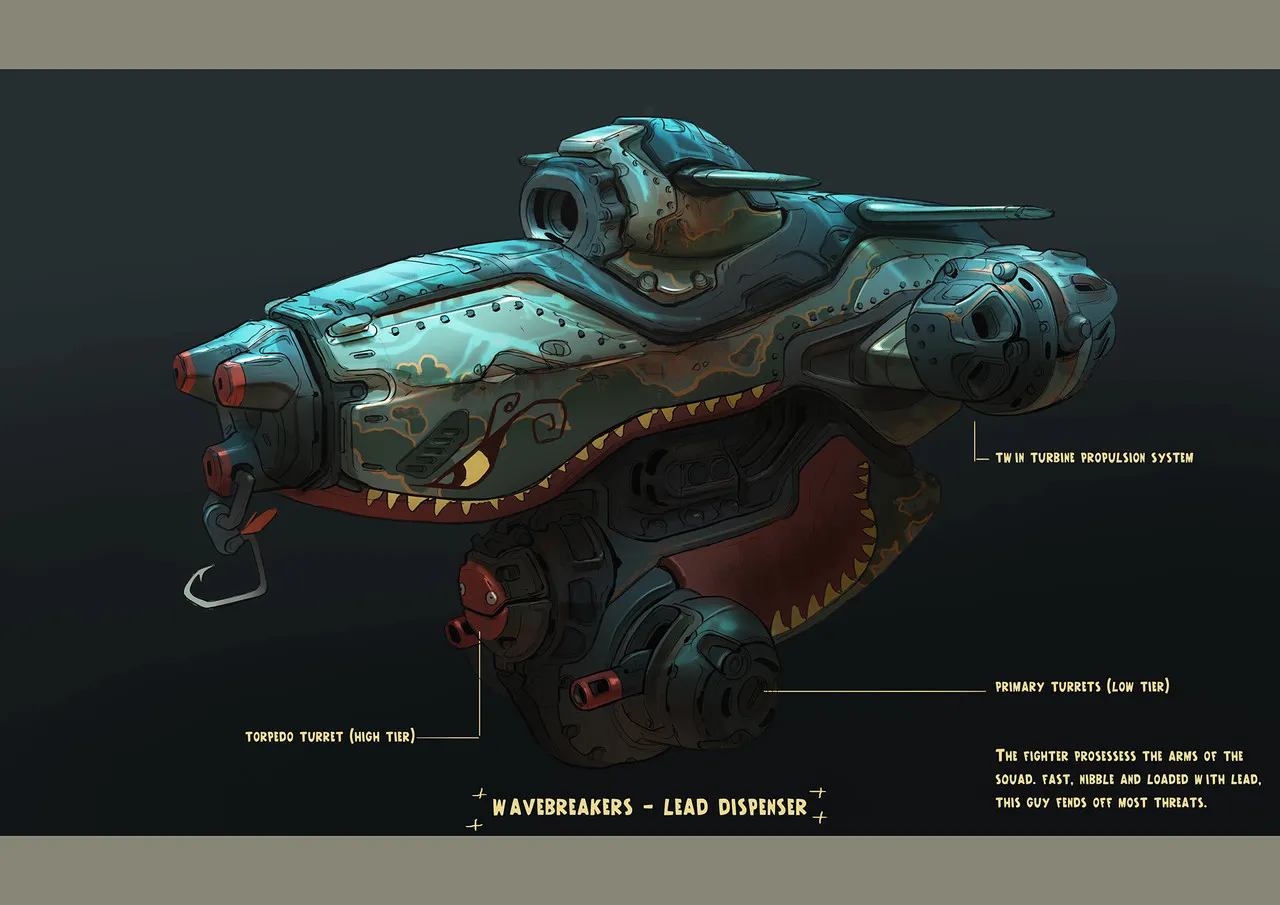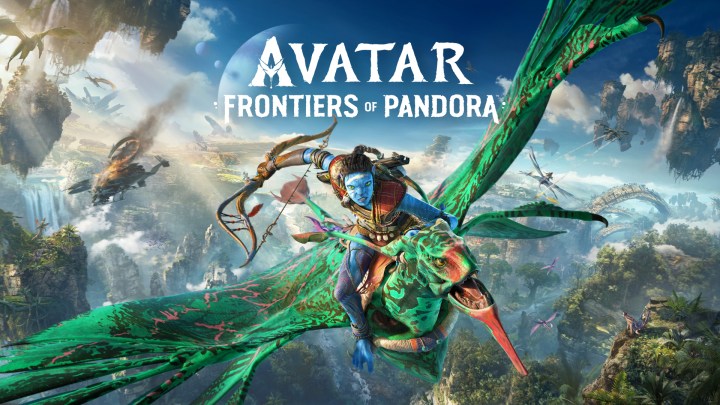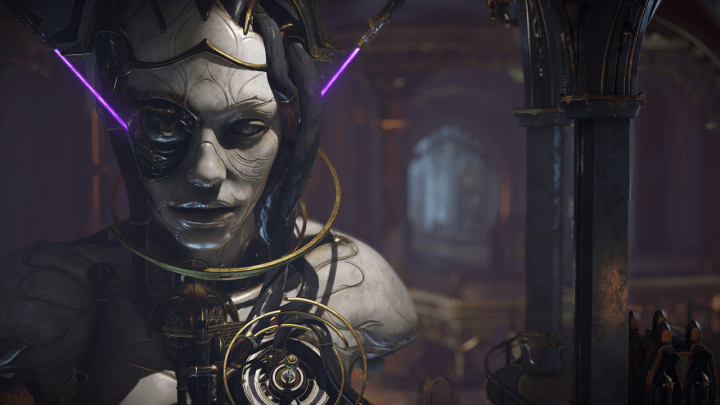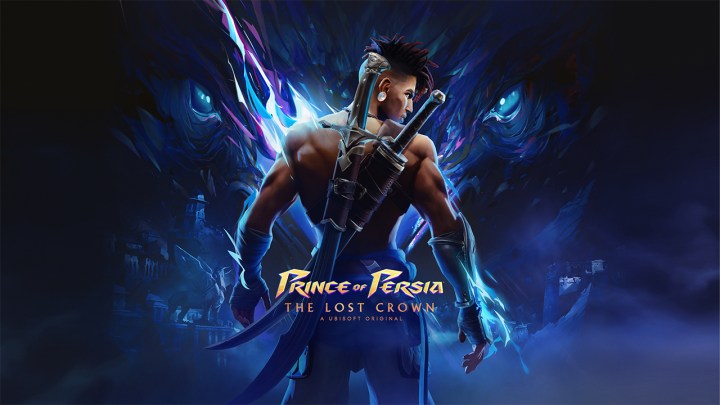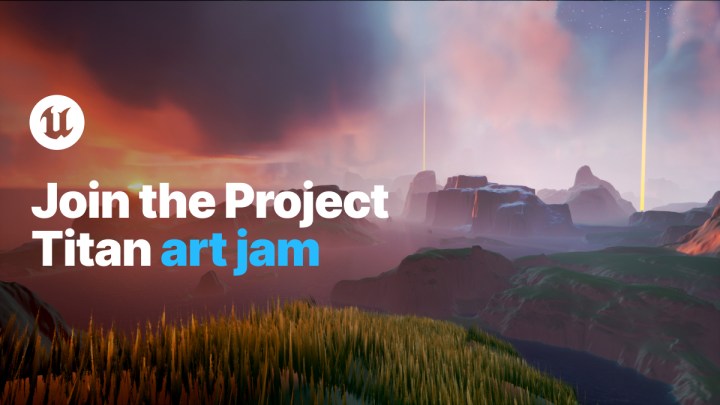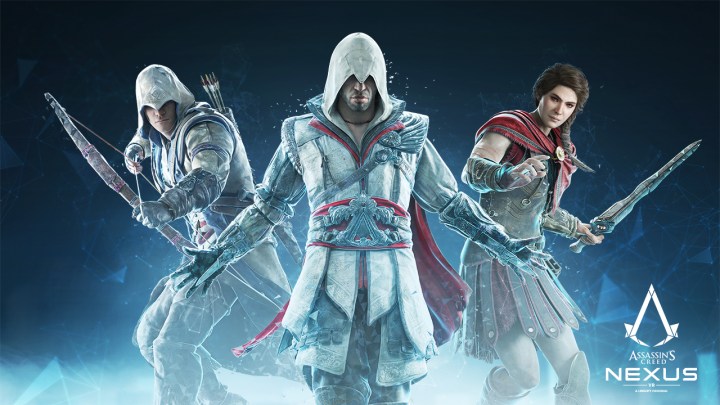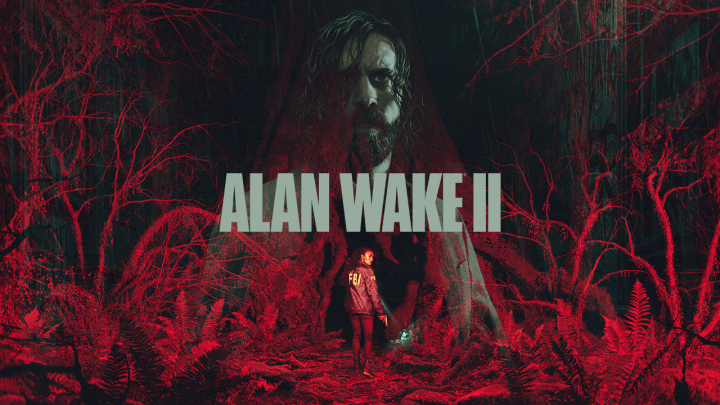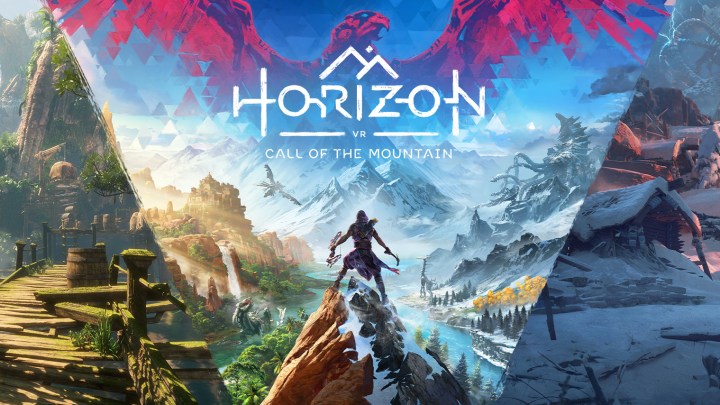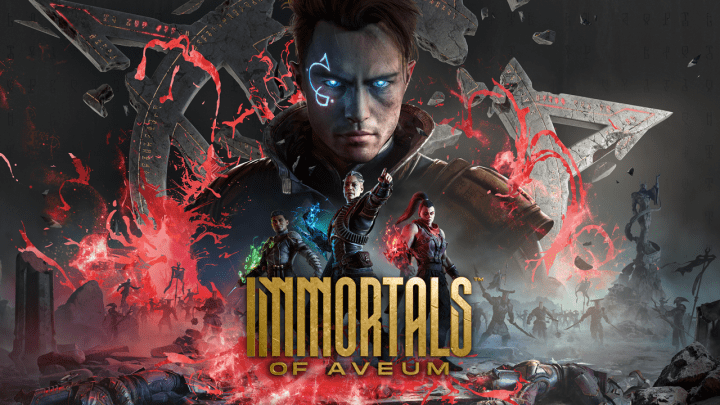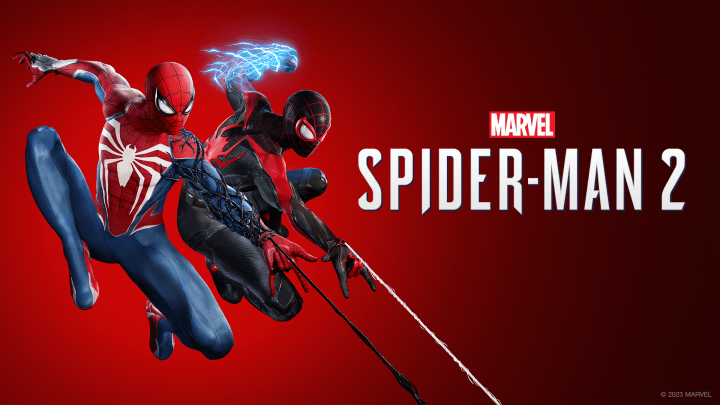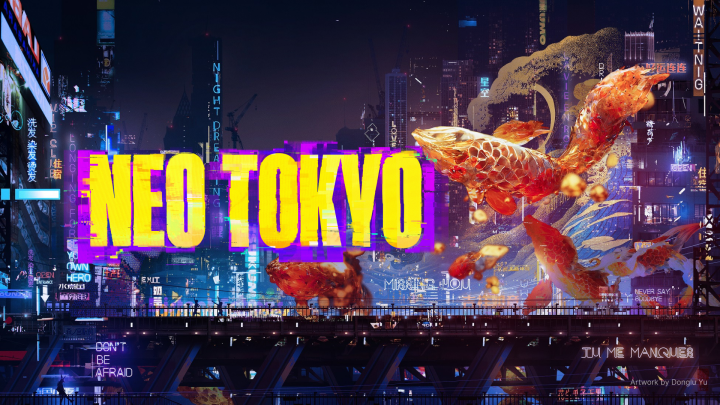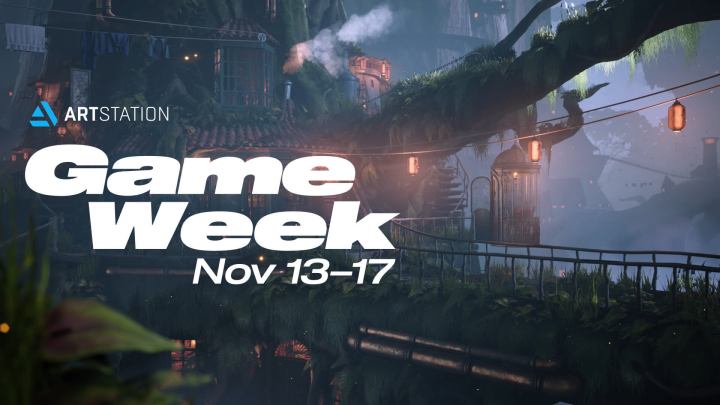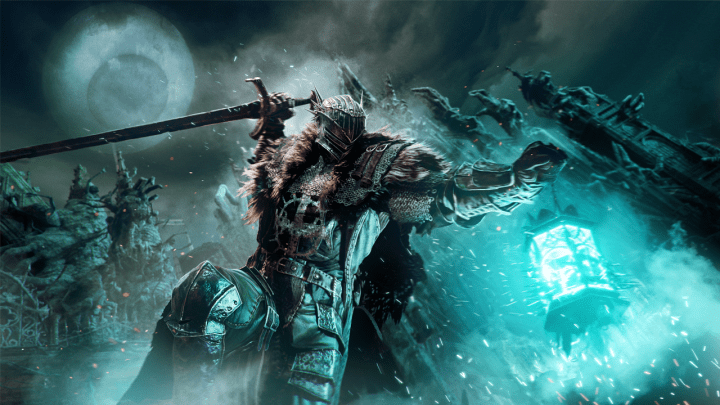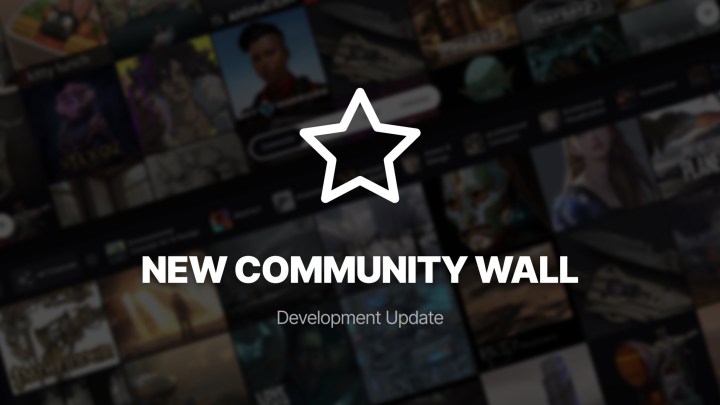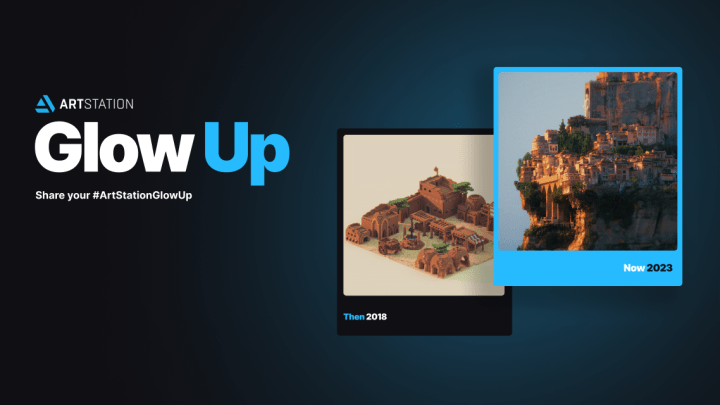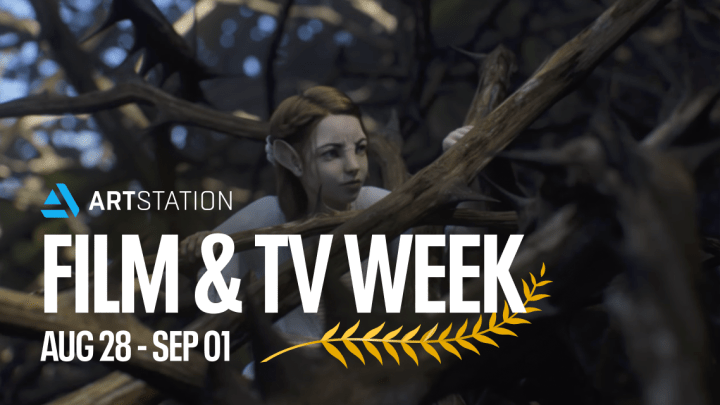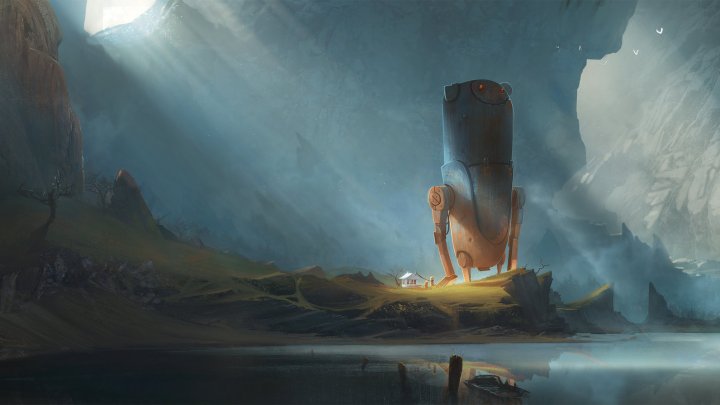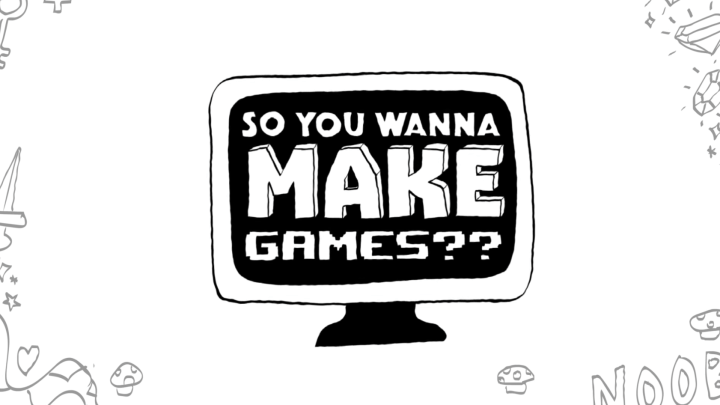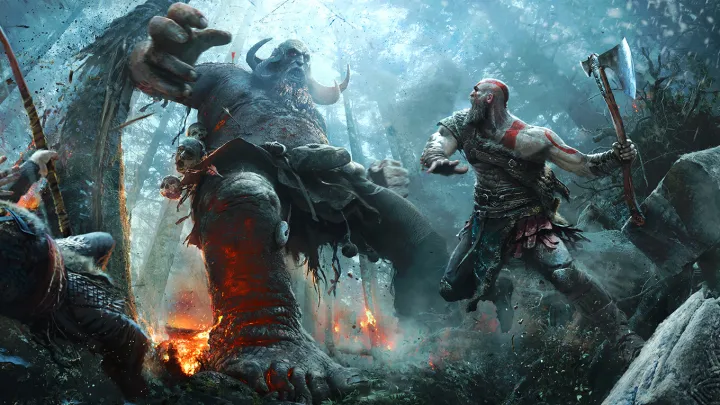Beneath the Waves Challenge: Prop Design Winners Interview
 For the first time with ArtStation Community Challenges, the Beneath the Waves Challenge included a Prop Design category. Challengers were asked to design 5 props for an underwater environment. These props were open to be vehicles, mechs, gadgets, weapons or buildings but each prop needed to tell its own story and function in an underwater environment.
For the first time with ArtStation Community Challenges, the Beneath the Waves Challenge included a Prop Design category. Challengers were asked to design 5 props for an underwater environment. These props were open to be vehicles, mechs, gadgets, weapons or buildings but each prop needed to tell its own story and function in an underwater environment.
See all the submissions to the Prop Design category of the Beneath the Waves Challenge.
The winners Tom McDowell, Braydan Barrett and Sheng Lam share some insight into what it was like competing in the challenge and how they achieved their final result.
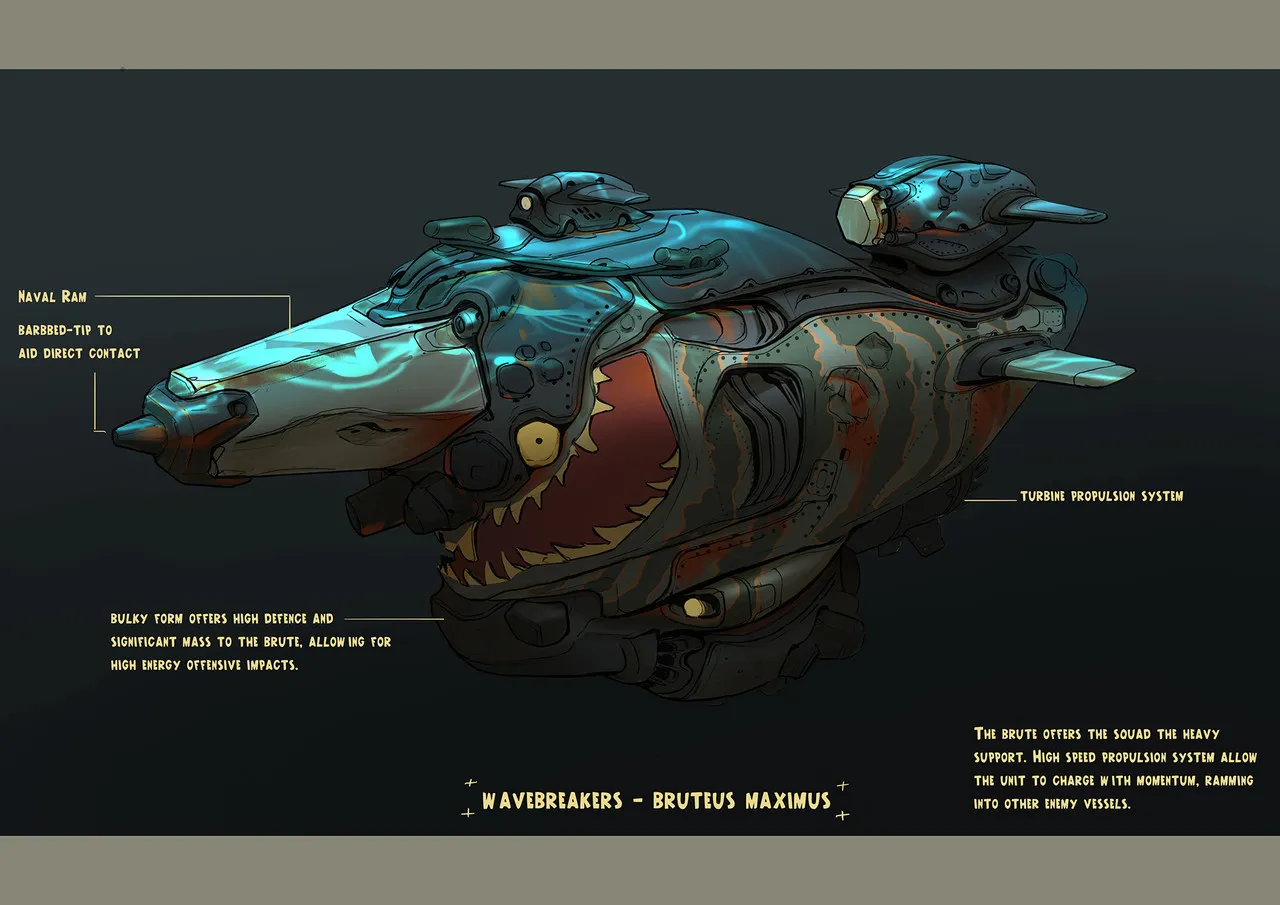 This was the first time we added a Prop Design Challenge. What was your main motivation to join and what did you think?
This was the first time we added a Prop Design Challenge. What was your main motivation to join and what did you think?
Tom: My main goal in taking part was the exposure. I was job-hunting, but I don’t know a lot of people in the industry, so the challenge was a great opportunity to show what I can do. I actually started chatting with Splash Damage through the competition, and I’ve just started work there! Overall the competition was great. I love friendly competition, and it was nice to get input throughout the process. Plus, thinking of the second stage (for production artists) is a good taster for being part of a real life pipeline. It gives meaningful requirements to the final submission drawings.
Braydan: I was excited to see ArtStation introduced a new category to the Challenges. I signed up with a group of friends all with a similar interest in industrial design, so it was a good chance to see how each of our projects would evolve. This challenge was also a pretty good test-bed for a world I wanted to explore too!
Sheng: I specialize in props, so this challenge was a great addition to the subject matter lineups. It was exciting to have the opportunity to participate in this competition.
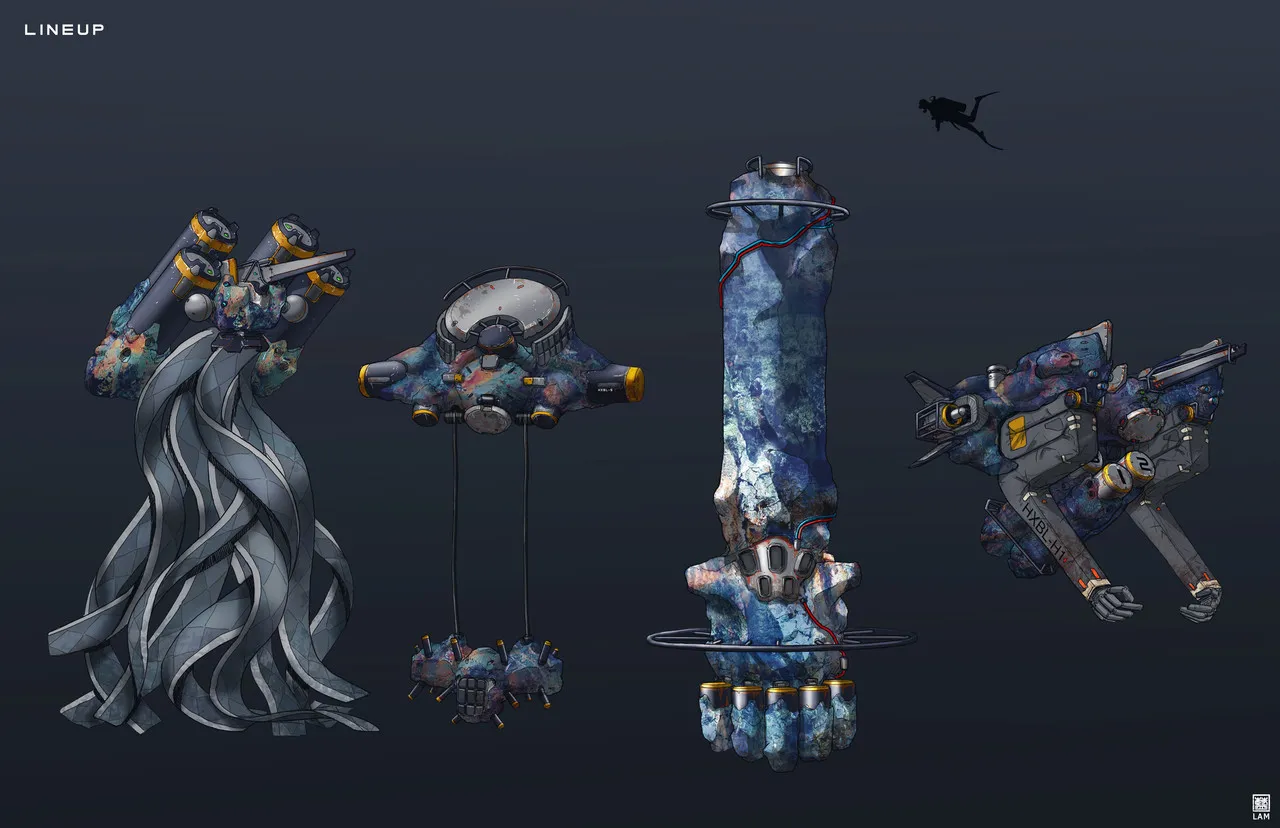 Tell us a little bit about your strategy and creation process for your submission.
Tell us a little bit about your strategy and creation process for your submission.
Tom: The brief was really wide open, and that can be pretty intimidating, creatively speaking. I quickly tried to tighten my scope of work. Backstory is a great driver for art and design work. Simple but specific works best; I went for “underwater construction equipment” set in a relatively normal universe in physical terms. No loonytoon submarines or cartoony proportion.
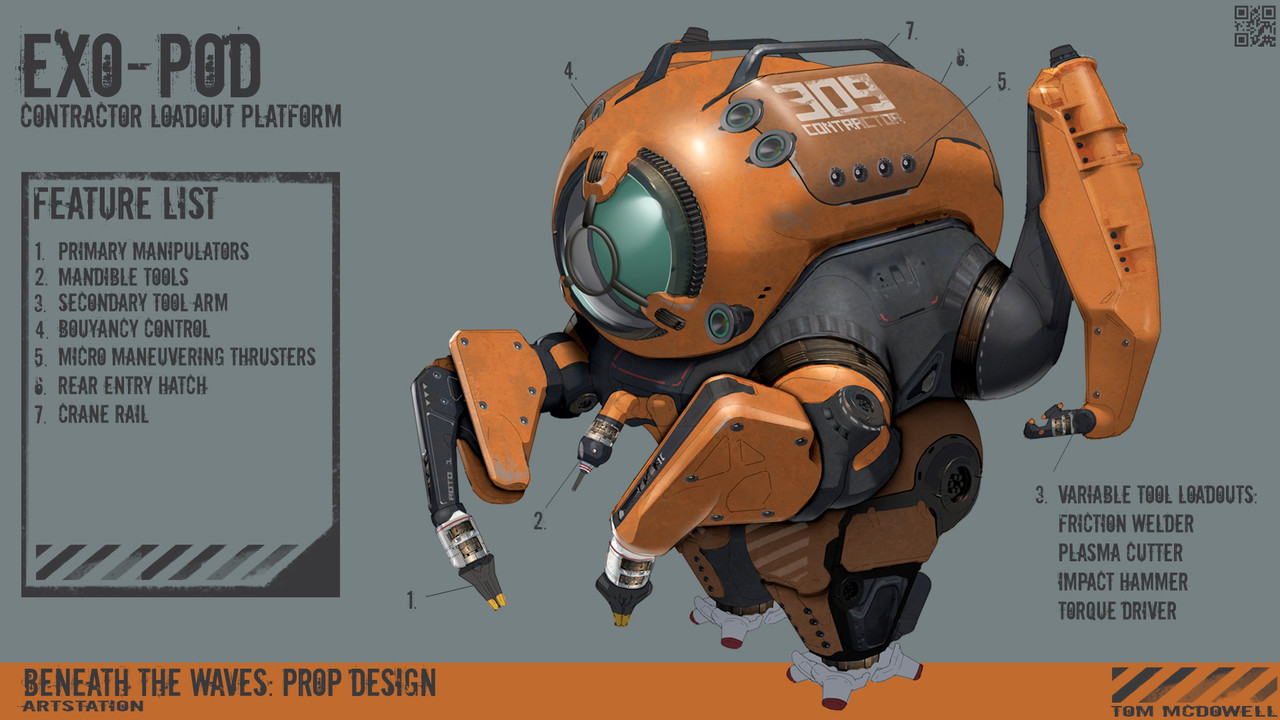
What do you think was the most difficult part specific to this challenge?
Tom: The time planning is tough. Five designs may sound simple enough, but it’s a lot to get through, especially if you want them to work as a group. For a client, I would work up thumbnails to a more meaningful level, but to save time, I skipped parts of this early stage. It’s nice being your own boss. I find I am most effective when I think first, and draw second. I can waste a lot of time pushing shapes around a page. It’s fun, but not fast. If I’m on a deadline, then I tend to write a word or two to start. It’s not set in stone, but provides a starting point. e.g. Squid Printer.
Braydan: For me the difficulty in this challenge was the final presentation. There was a lot of work to deliver in a short space of time, and I had much bigger ideas in mind too, but it all required much better time planning!
Sheng: Trying to come up with something different and make it stand out.
Were there any other submissions you were following?
Tom: There were a few I loved, for different reasons. Braydan Barrett’s sketches are stunning. So much character. They really brought the world he was working in to life. The product design part of me loved Andrian Luchian’s design sensibility. The sub and observation tower are gorgeous. Collette Curran’s entry, for sheer creativity. It was nice to see an entry which chose an entirely different route from the norm, and didn’t take its self too seriously. Would be cool to see in a cartoon. There were a lot of good ideas scattered throughout the entries.
Braydan: Gediminas Einikis‘ work stood out for me personally. He managed to capture a lot of character in his designs – I could imagine these to exist in a whimsical underwater world, not one far from my own! Alex Thomas had some killer industrial design going on too. His 3D design process is something I’d like to develop myself! Again, amazing work from winners Tom and Sheng.
Sheng: I was following one of my good friends, Braydan Barrett. Shoutout to him and his submission.
What is your advice for future prop design challengers?
Tom: Try to show the viewer a world through your work. Chose one premise, and explore it in depth. Give your designs specific purpose. It helps a lot. “Submarine” isn’t particularly defined, but “submarine for whale watching” suddenly has a much larger and more exciting impact on the outcome.
Braydan: I really find value in design exploration. I dedicated a lot of time in the challenge to sketching and iterating on my ideas, some good, most bad – but its important to not settle for the first thing that comes to mind. Personally I really enjoy seeing a lot of character and storytelling in industrial/prop design too, as it creates a strong opportunity to sell the larger themes of the world from which they exist!
Sheng: Just do it.
